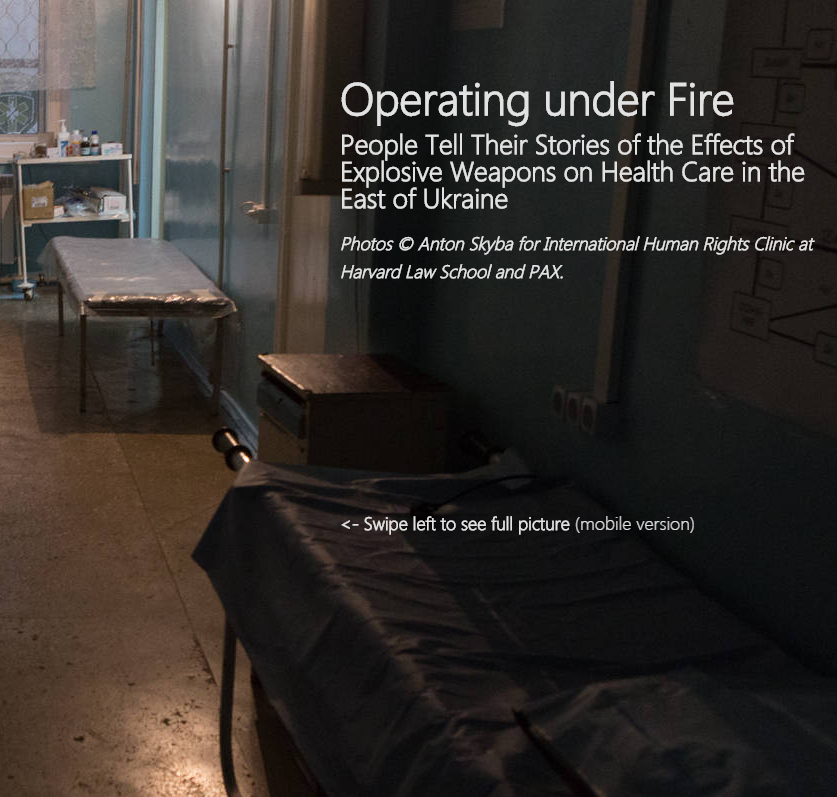Usually, PAX tells in words about the impact war has on civilians. This time, we tell a story in photographs. Words say a lot, but for many, images say more.
With this in mind, PAX presents the research ‘Operating Under Fire’, about the effects of the use of explosive weapons on health care in Ukraine, as a photo essay using the online application Scrollytelling.
Graphic
Damaged hospitals, impeded ambulance services, medical personnel and patients in danger, broken electricity, water, gas and telephone service: explosive weapons used in the east of Ukraine have had a major impact on the health care sector, both directly and indirectly. These impacts are detailed in the report ‘Operating under Fire’ published earlier this year by Dutch NGO PAX and the Harvard Law School’s International Human Rights Clinic (IHRC).
The photo story – playable on a pc, tablet or mobile phone – shows visually these direct and indirect impacts.
Impact
Since the beginning of the conflict in 2014, the use of explosive weapons in Ukraine has caused widespread damage. The report ‘Operating under Fire’ shows that when explosive weapons are used in populated areas, they often inflict harm on the health care system, even when they are not intentionally directed at hospitals.
Operating under Fire is a joint publication by Harvard Law School’s International Human Rights Clinic (IHRC) and PAX.
PAX is member of the Steering Committee of the International Network on Explosive Weapons (INEW) and calls for an international political commitment to prevent the harm caused by the use of explosive weapons in populated areas.




